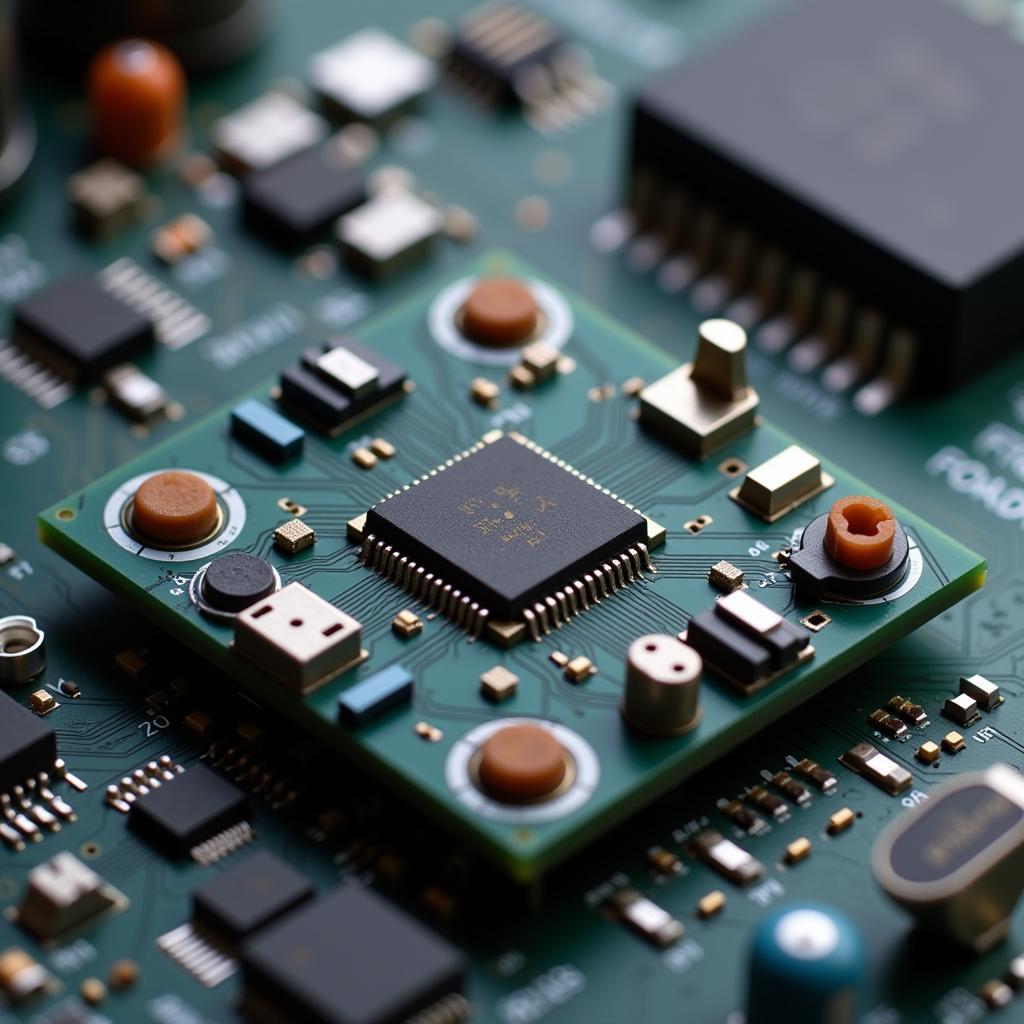In the rapidly evolving landscape of healthcare, hospitals are constantly seeking innovative technologies to enhance patient care and streamline operations. One such technology making significant strides is the Inertial Measurement Unit (IMU). This article delves into the role of IMUs in hospitals, exploring their applications, benefits, and potential impact on the future of healthcare.
What is an IMU and How Does it Work?
An IMU is a sophisticated electronic device that measures and reports an object’s specific force, angular rate, and sometimes the magnetic field surrounding the object, using a combination of accelerometers, gyroscopes, and magnetometers. These measurements allow for precise tracking of movement and orientation in three-dimensional space.
Imagine a tiny chip, smaller than a dime, capable of detecting even the slightest changes in motion and direction. That’s the power of an IMU. By integrating data from its sensors, it can determine an object’s velocity, acceleration, and position over time.
 IMU Sensor Technology
IMU Sensor Technology
Applications of IMU in Hospitals
IMUs are revolutionizing various aspects of healthcare delivery, offering a wide range of applications that benefit both patients and medical professionals.
1. Patient Monitoring and Fall Prevention
Falls pose a significant risk to hospitalized patients, particularly the elderly and those with mobility impairments. IMUs, integrated into wearable devices or embedded in hospital beds, can detect subtle changes in a patient’s movement and posture, alerting staff to potential falls before they occur. This proactive approach enhances patient safety and reduces the incidence of fall-related injuries.
2. Gait Analysis and Rehabilitation
IMUs have become indispensable tools in physical therapy and rehabilitation settings. By attaching IMU sensors to a patient’s limbs, therapists can obtain accurate data on their gait, range of motion, and balance. This information facilitates personalized treatment plans, tracks progress, and optimizes recovery outcomes.
For example, after a stroke or surgery, IMUs can help patients regain their mobility and coordination by providing real-time feedback on their movements.
3. Surgical Navigation and Robotics
In the operating room, IMUs are transforming surgical procedures, particularly minimally invasive surgeries. Surgeons can use IMU-equipped instruments to track their movements with pinpoint accuracy, enhancing precision and minimizing tissue damage.
Furthermore, IMUs play a crucial role in robotic surgery, providing real-time feedback to the robotic arms, allowing for precise control and manipulation of surgical tools.
4. Neurological Assessment and Diagnosis
Neurological disorders often affect movement and balance. IMUs offer a non-invasive and objective method for assessing neurological function. By analyzing data from IMU sensors placed on a patient’s head or limbs, neurologists can gain insights into conditions such as Parkinson’s disease, multiple sclerosis, and concussions.
Benefits of IMU Technology in Healthcare
The adoption of IMU technology in hospitals brings forth a multitude of benefits, including:
-
Enhanced Patient Safety: IMU-enabled fall prevention systems and patient monitoring devices contribute to a safer hospital environment, reducing the risk of falls and injuries.
-
Improved Patient Outcomes: By providing precise data and real-time feedback, IMUs support personalized treatment plans, optimize rehabilitation outcomes, and enhance surgical precision.
-
Increased Efficiency and Productivity: IMUs streamline workflows, automate data collection, and reduce the need for manual assessments, freeing up healthcare professionals to focus on patient care.
-
Cost Savings: By preventing falls and improving patient outcomes, IMUs contribute to cost savings through reduced hospital readmissions and shorter lengths of stay.
The Future of IMU in Hospitals
The use of IMUs in hospitals is poised for significant growth in the coming years. As technology advances and costs decrease, we can expect to see even wider adoption and innovative applications of IMU sensors.
One promising area of development is the integration of IMUs with artificial intelligence (AI) and machine learning (ML) algorithms. This powerful combination has the potential to revolutionize healthcare by enabling predictive analytics, early disease detection, and personalized treatment recommendations.
Conclusion
IMUs are transforming healthcare delivery by providing a versatile and powerful tool for patient monitoring, rehabilitation, surgical navigation, and neurological assessment. As technology continues to advance, we can anticipate even more innovative applications of IMUs in hospitals, further enhancing patient care, improving outcomes, and shaping the future of healthcare.
If you’re interested in learning more about the latest advancements in healthcare technology and how San Jose Hospital is leveraging these innovations to provide exceptional patient care, please contact us at 02437655121, email us at [email protected], or visit us at 298 Cầu Diễn Street, Minh Khai, Bắc Từ Liêm, Hanoi, Vietnam. We are here to answer your questions and provide you with the information you need.